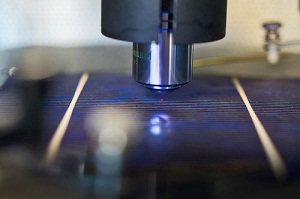Solar week in review: Reports show 2011 was biggest year yet
 Over the past week or two, a series of reports have come out showing that 2011 was the strongest year yet for solar installations in the U.S. and abroad. Going into 2012, installations are also likely to increase in the U.S. But manufacturers are continuing to struggle.
Over the past week or two, a series of reports have come out showing that 2011 was the strongest year yet for solar installations in the U.S. and abroad. Going into 2012, installations are also likely to increase in the U.S. But manufacturers are continuing to struggle.
For instance, Energy Conversion Devices, which owns United Solar (Uni-Solar), filed for bankruptcy last year. While it appeared the company was on the same trajectory as Solyndra or Evergreen Solar, a new partnership with Baraclit Spa of Italy may allow the company to avoid insolvency. Baraclit, which makes concrete buildings, is looking to use Uni-Solar’s flexible modules to meet requirements for a building-integrated PV feed-in tariff.
Internationally, the amount of solar installations completed grew 69 percent in 2011 over 2010. That’s according to Clean Edge, Inc., which recently issued its “Clean Energy Trends 2012.” It found that 26.5 gigawatts were installed in 2011, compared to 15.6 gigawatts in 2010.
An increasing number of solar installations were in the U.S., which accounted for about 7 percent of all installations in the world. But year-over-year growth in the U.S. was much higher, growing by 109 percent to 1,855 megawatts in 2011 compared to 887 megawatts in 2010. That’s according to “U.S. Solar Market Insight: Year-in-Review 2011,” a new report from GTM Research and the Solar Energy Industries Association (SEIA).
That’s not to say anyone should slack off at this point. A report by Institute for Local Self-Reliance found that solar could be on 100 million roofs in the U.S. and be at grid-parity. The report looked at pricing trends and determined that solar will likely reach grid parity without incentives shortly after this decade ends.
Meanwhile, American Security Project’s “America’s Energy Choices” determined that the U.S. needs more solar and that the country’s energy policy needs to change. The report found that politics are currently blocking expansion of clean energy, which is needed to make the U.S. more secure in the future.
The majority of all these reports focus on PV, since it’s been falling fast in price. But don’t count concentrating solar power (CSP) out just yet. Recognizing that CSP needs to do more to educate people about its benefits, three leading CSP companies formed the Concentrating Solar Power Alliance. The alliance was formed by Abengoa, BrightSource Energy and Torresol Energy.
Solar also continues to find its way into more places, like Bulgaria. Recently P2 Solar worked with Bulgaria to plan a 4.95 megawatt plant in Bulgaria. Most of the funding, 70 percent, will come from debt financing.
On the manufacturing front, companies are still working on bringing the next generation of solar to the market. For instance, Southwest Solar partnered with MaxQ Technology to bring its concentrating PV dishes closer to commercialization. MaxQ will help design ways to keep Southwest’s PV cells from overheating despite the high concentration levels of sunlight hitting them.
MiaSolé just garnered $55 million to help the company move closer to commercialization of its copper, indium, gallium and selenium (CIGS)-based PV. CIGS is starting to gain ground on the other thin-film PV technology, cadmium telluride, which is manufactured by First Solar, among others. The company attracted the funding from former investors including VantagePoint Capital Partners, Kleiner Perkins Caufield & Byers, Bessemer Venture Partners, Firelake Capital Management and Passport Capital.



